Everything you need to know about the new CDC regulations, ISO-compatible microchips and where to get one for your dog
Table of Contents
- 1 Everything you need to know about the new CDC regulations, ISO-compatible microchips and where to get one for your dog
- 2 Requirements for Bringing a Dog into the United States
- 3 Dogs Arriving from High-Risk Rabies Countries
- 4 FAQs About Microchips
- 4.1 What is a microchip?
- 4.2 How is a microchip implanted into an animal? Is it painful?
- 4.3 What kind of information is contained in the microchip? Is it a tracking device?
- 4.4 Does the microchip store my pet’s medical information?
- 4.5 The required microchips must be “ISO-compliant.” What does that mean?
- 4.6 My pet has a non-ISO-standard microchip implanted. Can I have it implanted with an ISO-standard, 134 kHz microchip?
- 4.7 Do I need to have the non-ISO-standard chip removed?
- 4.8 I want to get my dog(s) microchipped. Where do I go?
- 4.9 What should I do to “maintain” my pet’s microchip?
This year, the Centers for Disease Control and Prevention (CDC) updated its dog importation regulations in order to protect the health and safety of people and animals by preventing the reintroduction of rabies to the United States.
The new rules are more in keeping with the World Organization for Animal Health’s guidance, aimed at slowing the spread of dog rabies between nations and you will need to comply with them if you are bringing a dog into the United States.
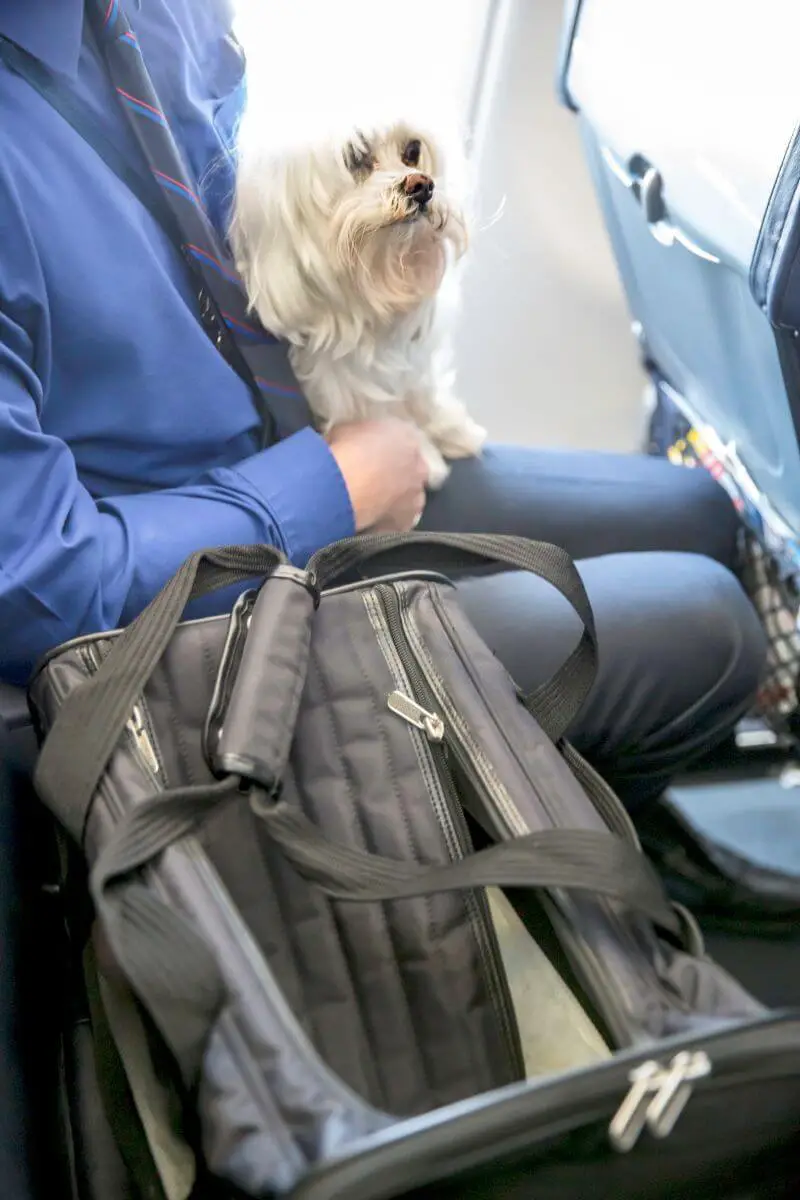
The rabies virus variant carried by dogs (dog rabies) was considered to be eliminated in the United States in 2007. However, since 2015, 4 dogs with rabies have been detected entering the U.S. from abroad.
That may not seem like a lot but just one infected animal puts all of our beloved pets (and humans) at risk.
Starting August 1, 2024, the CDC will implement new regulations regarding the entry of dogs into the U.S. These regulations aim to ensure the health and safety of all pets and people.
Rabies is over 99% fatal and is 100% preventable. Let’s do our part to stop the spread.
Requirements for Bringing a Dog into the United States
Dogs must be at least 6 months old (180 days) at the time of entry or return to the United States. This age corresponds with the minimum age required to receive the rabies vaccine.
ISO-Compatible Microchip
Beginning August 1st, all dogs being brought into the U.S. must have an International Organization for Standardization (ISO)-compatible microchip implanted. The ISO standard frequency is 134.2 kHz and can be read by universal scanners.
- The microchip number must be documented on all required forms and veterinary records.
- This microchip must be implanted before any required rabies vaccination.
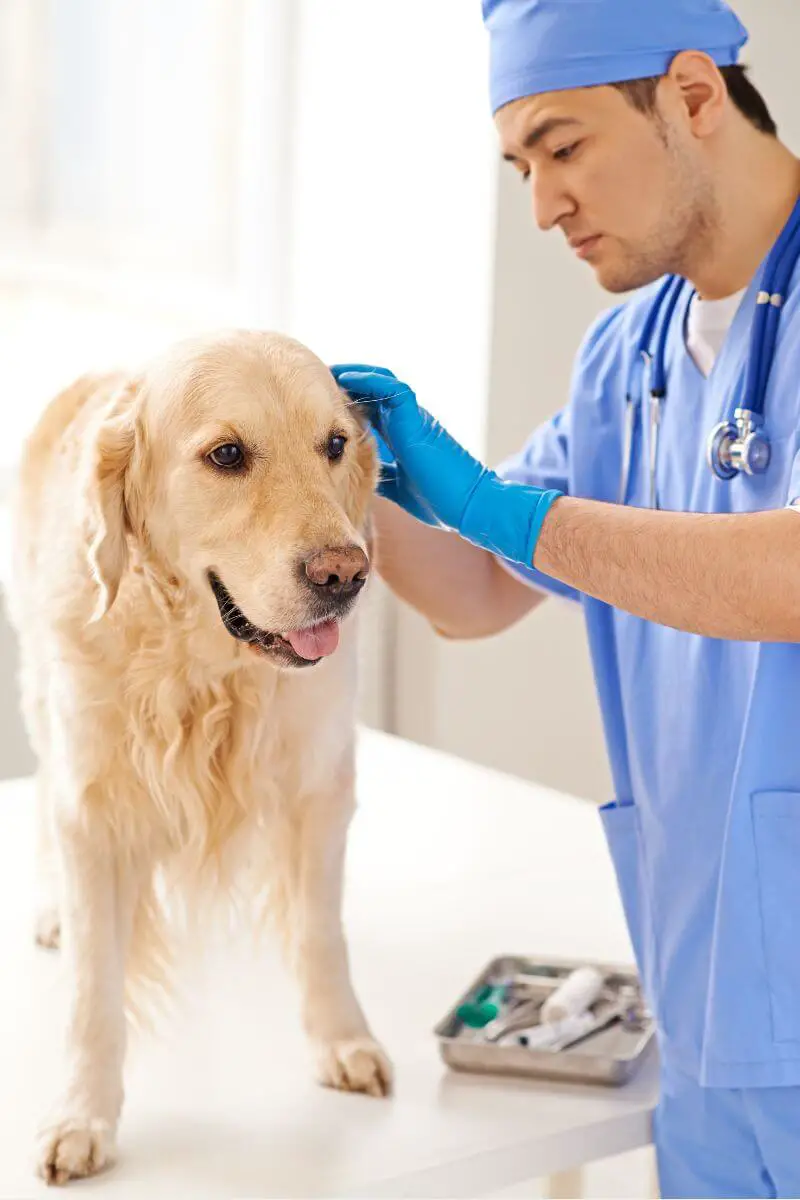
CDC Dog Import Form
Owners must provide a receipt indicating completion of the CDC Dog Import Form, which will be accessible on the CDC’s website beginning July 15, 2024. This form is to be completed by the owner and does not require review or verification by a veterinarian.
While the CDC recommends people complete the form ahead of time, it can be completed in less than 5 minutes from any location with cell service. The form submission system generates a receipt within minutes of submission, and the form is free to complete.
The port of entry listed on the CDC Dog Import Form receipt must match the port of entry of arrival.
This form also requires a current photograph of the dog, clearly showing its face and body.
Appearance of Good Health
Dogs must appear healthy upon arrival. Although the new requirements don’t include pre-travel testing or vaccination against diseases other than rabies, any dog that appears ill at the port of entry may be held for observation, further evaluation and testing at a CDC-registered animal care facility (at your expense) to rule out diseases transmissible to people.
These requirements apply at all ports of entry: land, air, and sea. They can vary depending on where the dog was vaccinated against rabies, where it has been during the 6 months before U.S. entry or re-entry, and which forms of documentation the importer has chosen to provide.
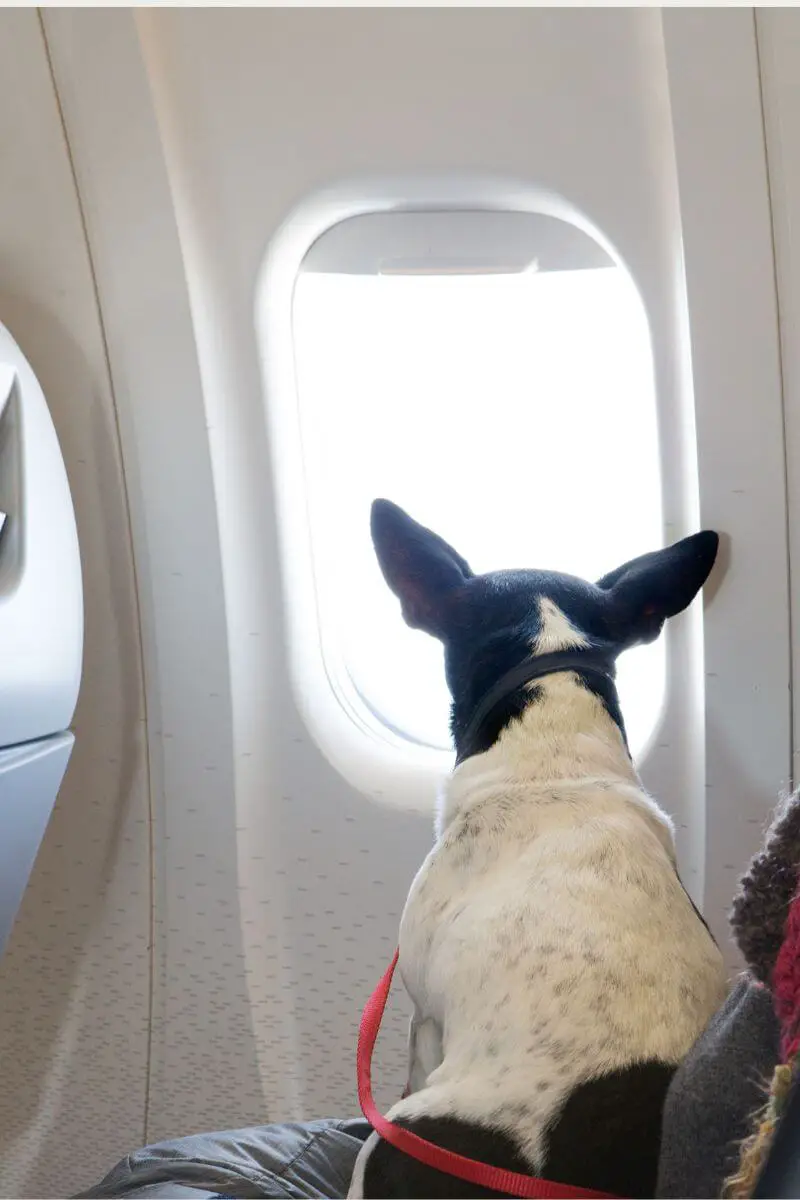
Proof of Rabies Vaccination or Booster
A dog’s initial (very first) rabies vaccine must be administered at least 28 days before travel. Microchipping and vaccination can be done on the same day, but owners will still need to wait 28 days before traveling with their dogs.
The new regulation stipulates that rabies vaccines received before microchip implantation are considered invalid for importation.
Dogs that have been vaccinated for rabies before an ISO-compatible microchip was implanted will need to be microchipped, and then receive another rabies vaccine (booster). Booster vaccines are valid immediately for travel.
Dogs Arriving from High-Risk Rabies Countries
Dogs that have been in high-risk countries within the past 6 months must have a Certification of U.S.-Issued Rabies Vaccine form endorsed by the USDA before departure.
During the transition period, a USDA-endorsed export health certificate may be used if it documents the dog’s age, microchip number, and valid rabies vaccination.
Dogs coming from high-risk rabies countries without U.S.-issued rabies vaccine documentation must meet specific additional requirements, including rabies serology titer testing and possibly a 28-day quarantine.
It is important to note that Mexico is NOT considered a high-risk country for rabies.

To make all the requirements for your four-legged companion clear and to avoid mistakes, the CDC has created DogBot to ensure easy entry for you and your dog.
The New CDC DogBot
The CDC has created a simple online questionnaire to help dog owners understand the importation requirements for their pets.
All dog owners should use DogBot to determine what rules apply to their dog based on when the dog will arrive in the United States, where the dog has been in the 6 months before arriving in the United States, and where the dog received its rabies vaccination.
If you don’t follow CDC’s rules, your dog will not be allowed to enter the United States. Dogs that do not meet all entry requirements or do not have accurate and valid forms will be denied entry to the United States and returned to the country of departure at the owner’s expense. The “country of departure” is considered to be where the last trip originated—not where the dog was born or where it lives now.
- These requirements apply to all dogs, including service dogs and dogs that were born in the United States.
- These requirements apply to all dog owners traveling into the U.S. with their pet, whether they are U.S. citizens, legal U.S. residents, or foreign nationals.
- Do not wait until the last minute. Ensure you are prepared to meet the requirements in advance of your travel dates to facilitate a smooth transition for you and your furry friends.
- This new regulation does not change entry requirements for cats. The CDC requires cats to be healthy to enter the U.S. Cats require no rabies documentation.
For more detailed information and to complete the necessary forms, please visit the CDC’s official importation page.
FAQs About Microchips
What is a microchip?
A microchip (also called a transponder) is a small, electronic chip enclosed in a tiny glass cylinder, about the same size as a grain of rice. The microchip is activated by the radio waves of the scanner when it is passed over the area. The chip transmits the identification number to the scanner, which displays the registration number on the screen.
How is a microchip implanted into an animal? Is it painful?
The chip is injected under the skin using a hypodermic needle. Although the needle is slightly larger, the procedure should be no more painful than a typical injection. No surgery or anesthesia is required. A microchip can be implanted during a routine veterinary office visit.
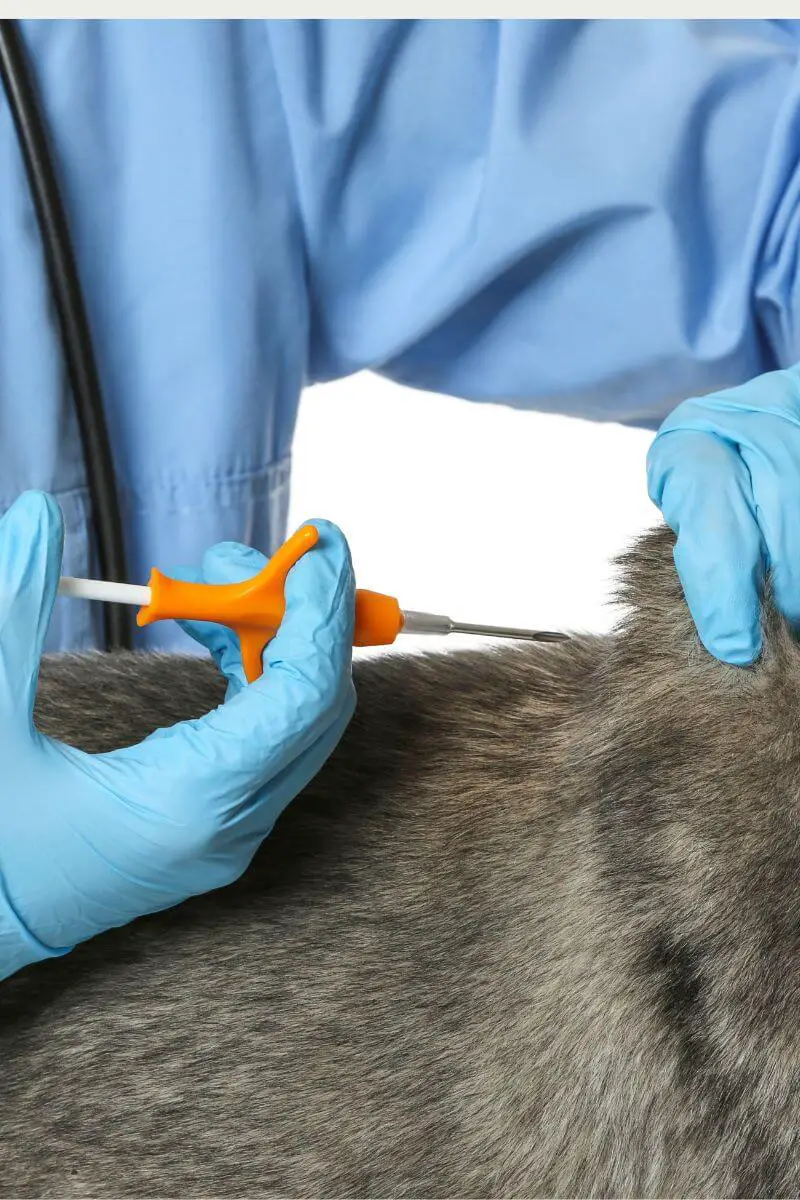
What kind of information is contained in the microchip? Is it a tracking device?
The microchips presently used in pets only contain identification numbers. The microchip is not a GPS device and cannot track your animal if it gets lost.
Does the microchip store my pet’s medical information?
Although the microchip itself does not contain your pet’s medical information, some microchip registration databases will allow you to store that information in the database for quick reference.
The required microchips must be “ISO-compliant.” What does that mean?
The International Standards Organization (ISO) has approved and recommended a global standard for microchips. The global standard is intended to create an identification system that is consistent worldwide.
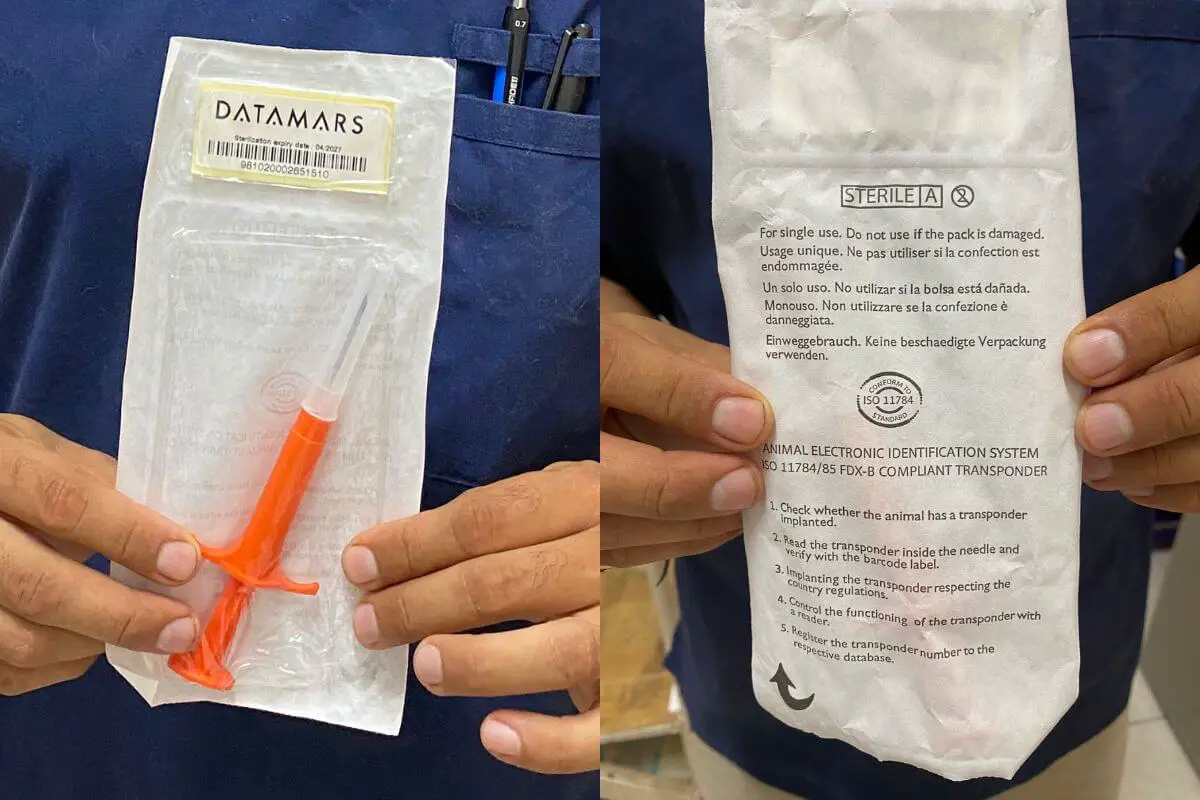
ISO-compatible microchips contain a 15-digit numeric identification code and can be activated at a frequency of 134.2 kHz. Such microchips allow a standard of record keeping that is recommended by the World Organization for Animal Health when pets are transported internationally.
Most standard microchips used in the U.S. are ISO-compatible and will serve this purpose. The microchip does not need to be from the U.S. If a dog is already microchipped, you can verify that the chip is ISO-compatible by scanning it with a universal microchip scanner. Dr. Zair has one in his office.
Some universal scanners used in the U.S. have been unable to detect microchips that begin with the numbers 1 or 8. If a dog’s microchip begins with a number other than 9, please make an appointment with your veterinarian to confirm the microchip can be detected by a universal scanner.

My pet has a non-ISO-standard microchip implanted. Can I have it implanted with an ISO-standard, 134 kHz microchip?
Yes. Both chips will function normally. A universal scanner will probably detect both chips.
If the dog was previously implanted with a non-ISO microchip and the ISO scanner used is not universal (forward and backward-reading), the dog’s microchip might not be detected by the scanner. The ISO standard frequency is 134.2 kHz.
Do I need to have the non-ISO-standard chip removed?
No. You don’t need to have the other microchip removed. The two will not interfere with each other.
If you know your pet has more than one microchip implanted, make sure you keep the database information updated for each microchip. That way, if your pet goes missing, you can be contacted and your pet returned to you no matter which microchip is detected.
I want to get my dog(s) microchipped. Where do I go?
Dr. Zair at Playa Pet has confirmed that they have the CDC-required microchips and will be able to administer them to your dog.
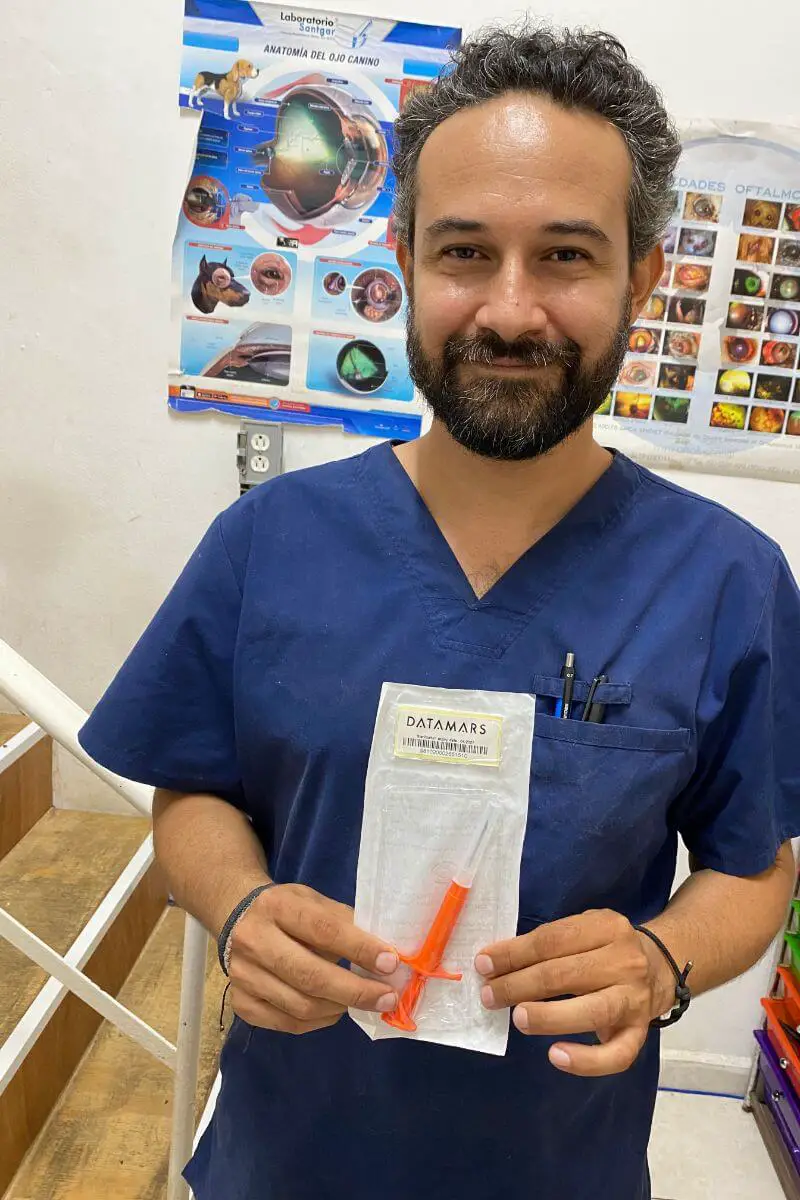
- Owners must make an appointment in advance via WhatsApp +52 984 253 1410.
- The procedure can be done in the office while you wait
- The cost for the microchip is 2000 MXN and includes the required “Passport”
- Rabies vaccines and boosters can be administered at the same time.
- The cost for a rabies vaccine or booster is 450 MXN
- If your pet is already undergoing anesthesia for a procedure, such as neutering or spaying, the microchip often can be implanted while they’re still under anesthesia
What should I do to “maintain” my pet’s microchip?
Once your pet is microchipped, there are only three things you need to do:
- Make sure the microchip is properly registered.
- Ask your veterinarian to scan your pet’s microchip at least once a year to make sure the microchip is still functioning and can be detected.
- Keep your registration information up-to-date. If you’ve moved, or if any of your information has changed, make sure you update your microchip registration in the manufacturer’s database as soon as possible.
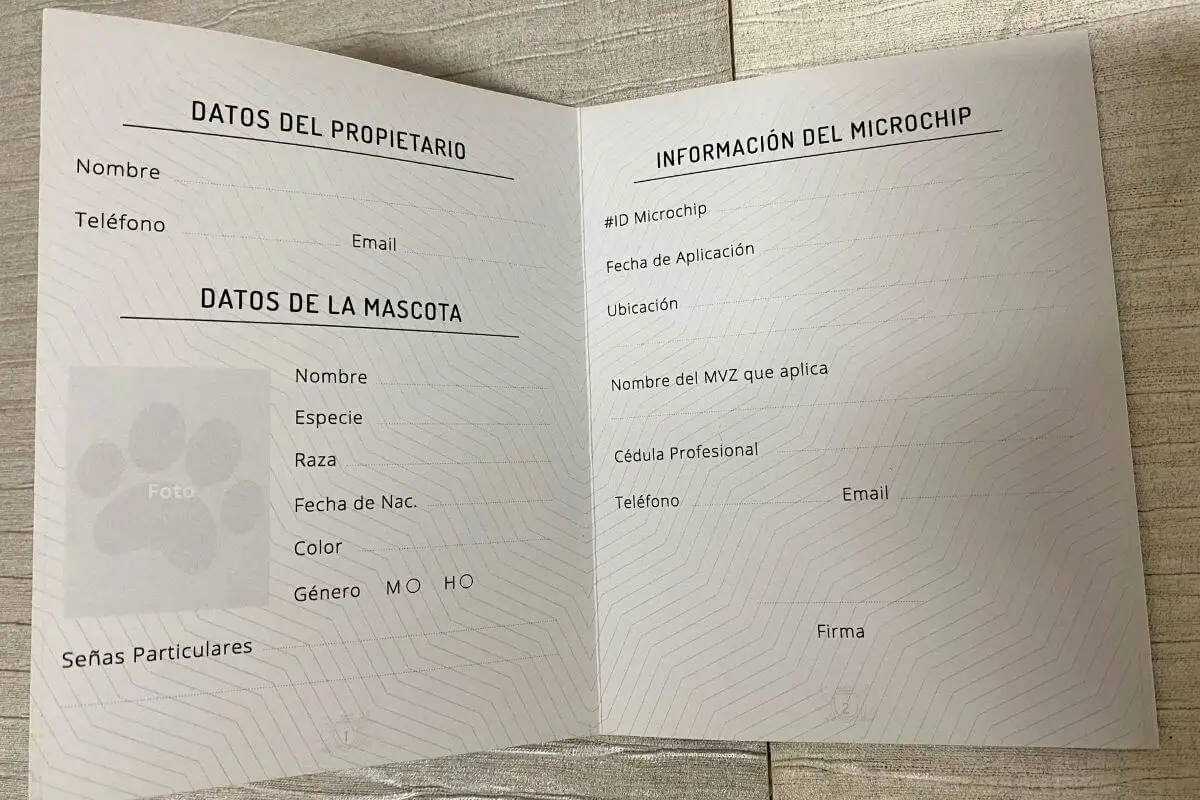
Did you find this article helpful? Please share it!
If you enjoyed this post, you might also like to read:
How to Avoid Dengue Fever: Everything You Need to Know

